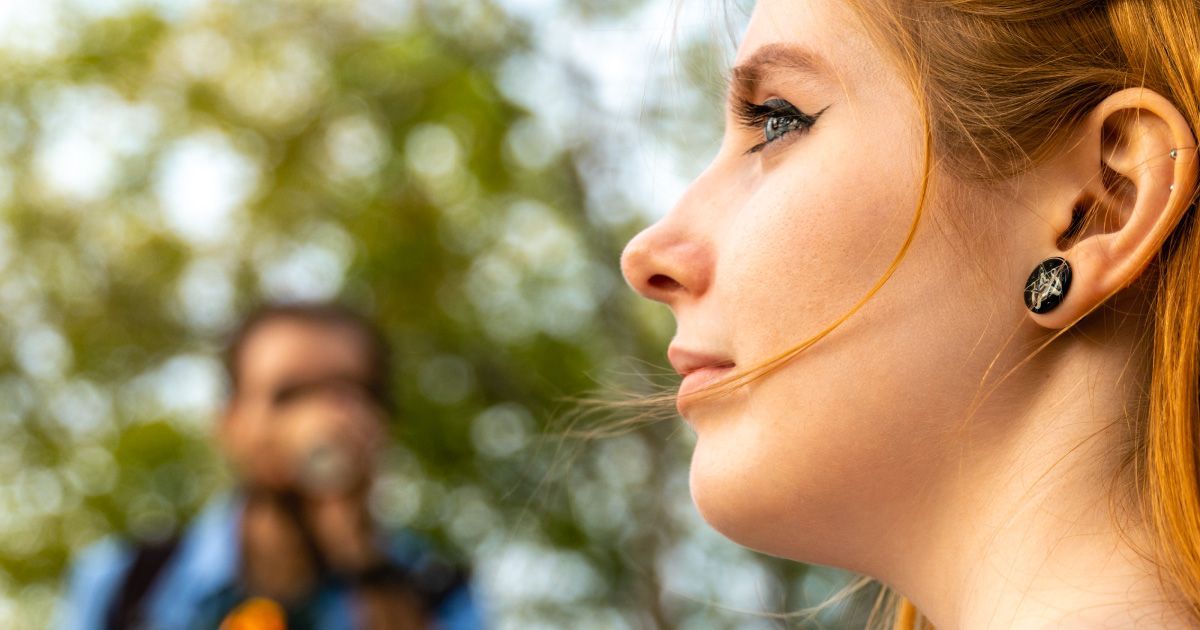Pinguecula and Pterygium: What Are Those Bumps on Your Eye?

Read time: 4 minutes
Have you ever spotted a small yellowish bump or a fleshy patch on the white of your eye, especially near the inner corner? That could be a pinguecula or a pterygium. These growths are harmless in most cases, but they can cause irritation - and sometimes even affect vision. Often called surfer’s eye, they’re strongly linked to sun exposure, though you don’t need to surf to develop them. Anyone who spends time outdoors in the sun, wind, or dusty environments may be at risk.
This guide will break down what these conditions are, how they form, what symptoms to watch for, and the best ways to treat and prevent them.
What’s the Difference Between Pinguecula and Pterygium?
Both conditions affect the conjunctiva, the thin layer that covers the white part of your eye. But they look and behave a little differently:
- A pinguecula is a flat or slightly raised yellowish spot that usually appears on the inner (nasal) side of the eye. It doesn’t grow over the cornea and is mostly a cosmetic issue, though it can sometimes cause irritation or dryness.
- A pterygium is a fleshy, triangular growth that starts in the same area but can extend onto the cornea (the clear front surface of the eye). As it grows, it may change the shape of the cornea and blur vision.
While a pinguecula can sometimes progress into a pterygium, not all of them do. Both are benign, but a pterygium needs closer monitoring because of its potential impact on sight.
What Causes Them?
The biggest culprit is ultraviolet (UV) light exposure. Years of unprotected sunlight can trigger tissue changes on the surface of the eye. Other risk factors include:
- Frequent wind, dust, and dry air exposure
- Outdoor jobs or sports like farming, skiing, or construction
- Dry eye, which makes the eye more vulnerable
- Living in sunny or equatorial regions
Although more common after age 30, both conditions can develop earlier in people who spend a lot of time outdoors without protection.
Understanding how climate affects your eyewear choices can help you make smarter decisions that enhance both your comfort and eye health. Visit our blog for more insights.
Signs and Symptoms
In the early stages, pinguecula and pterygium might not cause any discomfort at all. Over time, you may notice:
- A visible bump on the white of the eye
- Redness and irritation in the affected area
- Dryness, grittiness, or burning sensations
- A feeling like there’s something stuck in your eye
- Watery eyes or sensitivity to bright light
- In advanced pterygium, blurred or distorted vision
If you notice a growing or bothersome spot on your eye, it’s best to get it checked to rule out more serious issues.
How Are They Diagnosed?
Your eye doctor can typically diagnose a pinguecula or pterygium during a routine exam with a slit lamp microscope. In some cases, photos or imaging may be used to track changes over time.
While these growths are benign, any unusual eye lesion should be evaluated to rule out rare but more serious conditions.
Treatment Options
Treatment depends on whether the growth is just a cosmetic nuisance or if it’s causing symptoms.
- Mild cases: Lubricating drops, artificial tears, or occasional anti-inflammatory eye drops can ease irritation. Wearing sunglasses and protective eyewear can help keep the growth from worsening.
- Moderate to severe cases: If a pterygium grows onto the cornea and starts affecting vision—or if symptoms become chronic—surgical removal may be recommended. Today’s advanced surgical techniques, such as using conjunctival grafts and tissue adhesives, help reduce the risk of recurrence.
- Cosmetic concerns: Pingueculae can sometimes be removed for appearance, but this is less common and usually only done if they cause significant irritation.
It’s worth noting that recurrence is more common in younger patients and in those who don’t protect their eyes from UV after surgery.
Prevention: Your Best Defense
The good news? With the right habits, you can significantly reduce your risk. Preventive care includes:
- Wearing UV-blocking sunglasses year-round—even when it’s cloudy
- Choosing wraparound styles to shield from wind, dust, and side sunlight
- Using artificial tears in dry or windy environments
- Wearing protective eyewear for outdoor sports or dusty work
- Avoiding direct sun during peak UV hours (10 am - 4 pm)
Check out our blog, The Necessity of Wearing Sunglasses: Protecting Your Eyes from Harm, for more tips.
The Takeaway
Pinguecula and pterygium are common, benign eye conditions that result from long-term exposure to sunlight and environmental irritants. While they may start as minor cosmetic issues, they can progress and cause discomfort or even affect your vision if untreated. Fortunately, with early intervention and preventive care, most cases can be managed without surgery.
At Urban Optiks Optometry, we take ocular surface health seriously. Whether you're noticing changes in your eye’s appearance or just want to make sure your eyes are protected from the elements, our team offers comprehensive exams, personalized treatment, and expert guidance to keep your eyes clear, healthy, and comfortable.
Share this blog post on social or with a friend:
The information provided in this article is intended for general knowledge and educational purposes only and should not be construed as medical advice. It is strongly recommended to consult with an eye care professional for personalized recommendations and guidance regarding your individual needs and eye health concerns.
All of Urban Optiks Optometry's blog posts and articles contain information carefully curated from openly sourced materials available in the public domain. We strive to ensure the accuracy and relevance of the information provided. For a comprehensive understanding of our practices and to read our full disclosure statement, please click here.


















